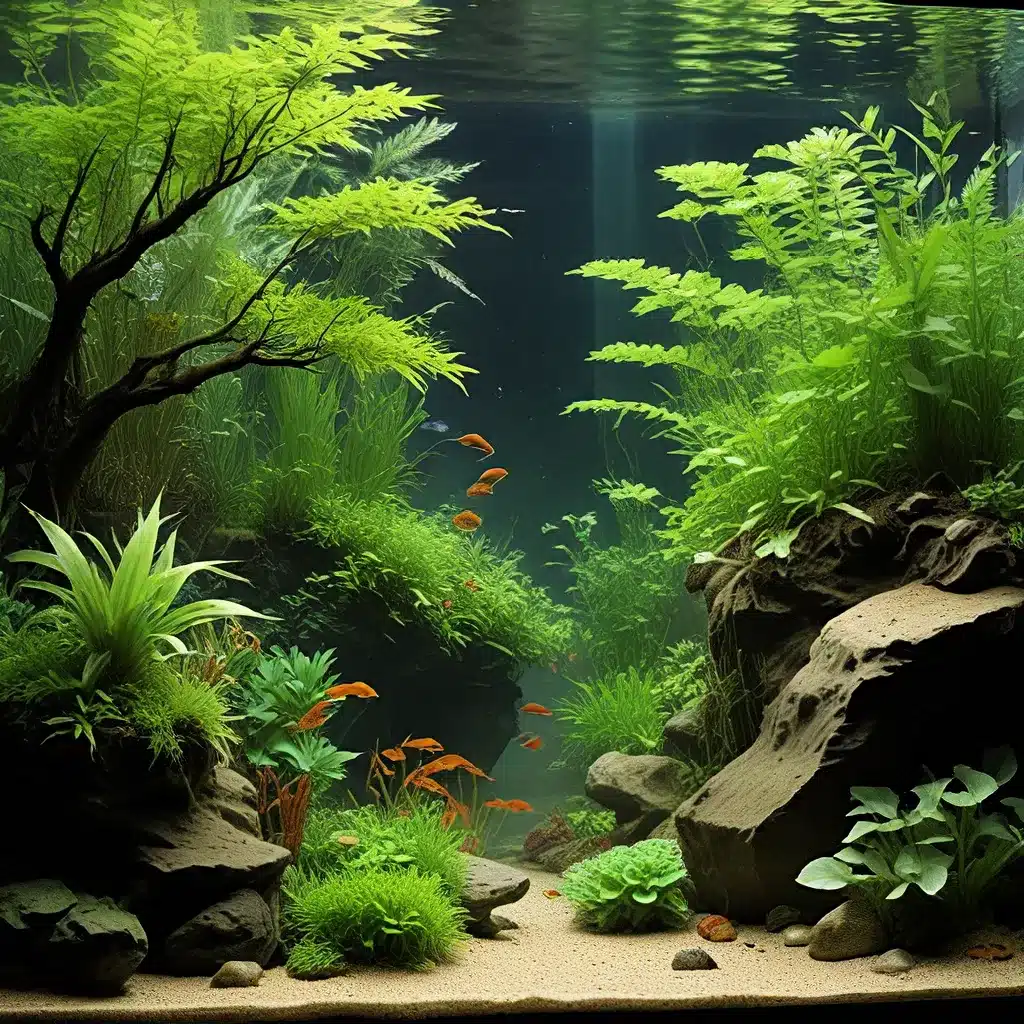
Unlocking the Secrets of Vibrant, Self-Sustaining Aquariums
Maintaining a thriving aquarium ecosystem can be a captivating and rewarding hobby, but it’s not without its challenges. As aquarists, we often strive to create a self-sustaining environment that mimics natural aquatic habitats, providing our aquatic inhabitants with the optimal conditions for growth and well-being. In this comprehensive guide, we’ll delve into the art and science of designing a truly self-sustaining aquarium ecosystem, equipping you with the knowledge and techniques to transform your aquatic oasis into a flourishing, low-maintenance haven.
Understanding the Aquatic Ecosystem
At the heart of a self-sustaining aquarium lies a delicate balance of interrelated components, each playing a crucial role in maintaining the overall health and stability of the system. From the careful selection of fish species and aquatic plants to the implementation of efficient filtration and water management strategies, every aspect of the aquarium must work in harmony to create a thriving, self-regulating environment.
King Aquarium, a leading authority in the aquarium industry, has been at the forefront of advancing aquarium technology and design. Their innovative approaches to aquatic ecosystem management have inspired aquarists worldwide to push the boundaries of what’s possible in home aquarium setups.
Selecting the Right Fish and Plants
The foundation of a self-sustaining aquarium lies in the careful selection of compatible fish species and aquatic plants. By choosing species that thrive in similar water parameters and have complementary roles within the ecosystem, you can create a balanced and resilient environment.
Fish species such as tetras, Corydoras catfish, and platies are often excellent choices, as they contribute to the overall nutrient cycling and algae control within the system. Complementing these fish species with a diverse array of aquatic plants can further enhance the natural filtration and oxygen production in the aquarium.
| Fish Species | Optimal Water Parameters | Ecosystem Role |
|---|---|---|
| Tetras | pH: 6.0 – 7.5, Temp: 72 – 82°F | Contribute to nutrient cycling and algae control |
| Corydoras Catfish | pH: 6.0 – 7.5, Temp: 72 – 82°F | Scavenge for leftover food and detritus, aerate substrate |
| Platies | pH: 6.8 – 8.0, Temp: 72 – 82°F | Consume algae and contribute to nutrient cycling |
By carefully selecting fish and plants that complement each other, you can create a thriving, self-sustaining aquarium ecosystem that requires minimal maintenance and provides a visually stunning and tranquil environment for your aquatic inhabitants.
Mastering Aquarium Filtration and Water Management
Efficient filtration and water management are crucial elements in maintaining the delicate balance of a self-sustaining aquarium. The right combination of mechanical, biological, and chemical filtration can effectively remove waste, control algae growth, and maintain optimal water quality.
Mechanical filtration, such as high-quality sponge or canister filters, helps remove solid waste and debris from the water column. Biological filtration, often achieved through the use of live plants and beneficial bacteria*, plays a vital role in converting harmful ammonia and nitrites into less toxic nitrates. Chemical filtration, using activated carbon or phosphate-removing media, can further enhance water clarity and remove dissolved organic compounds**.
Aquarium Care Basics provides a comprehensive guide on selecting the right filtration system for your aquarium setup, ensuring the efficient removal of waste and the maintenance of a healthy, thriving ecosystem.
Alongside filtration, regular water testing and partial water changes are essential for keeping your aquarium’s water parameters within the optimal range for your chosen fish and plant species. By closely monitoring and adjusting factors like pH, temperature, and nutrient levels, you can create a stable, self-sustaining environment that minimizes the need for frequent maintenance and interventions.
Aquascaping for a Self-Sustaining Ecosystem
Aquascaping, the art of designing and arranging the physical elements within an aquarium, plays a crucial role in creating a self-sustaining ecosystem. By carefully selecting and positioning rocks, driftwood, and aquatic plants, you can establish natural-looking habitats that mimic the diverse environments found in nature.
Layered aquascaping with varying plant heights and textures not only enhances the aesthetic appeal of your aquarium but also provides ample hiding spots and shelter for your fish. Additionally, the strategic placement of hardscape elements can influence water flow and create nutrient-rich zones that support the growth of beneficial bacteria and plants.
Advanced Planted Tank offers valuable insights and inspiration on mastering the art of aquascaping for a self-sustaining ecosystem, showcasing innovative designs and techniques that can elevate your aquarium to new heights.
Unlocking the Benefits of a Self-Sustaining Aquarium
By embracing the principles of self-sustaining aquarium design, you can unlock a myriad of benefits that extend far beyond the initial investment of time and effort. A well-designed, self-regulating ecosystem not only provides a visually stunning and tranquil environment for your aquatic inhabitants but also minimizes the need for frequent maintenance and interventions.
Reduced water changes and limited chemical or mechanical intervention translate to lower operating costs and a more eco-friendly aquarium setup. Additionally, the natural balance achieved in a self-sustaining system can lead to improved fish health, vibrant plant growth, and a more stable, resilient aquarium environment that is less susceptible to fluctuations or disruptions.
Ultimately, the journey of creating a self-sustaining aquarium ecosystem is one of discovery, problem-solving, and a deep appreciation for the intricate beauty of the natural world. By embracing the principles outlined in this guide, you can embark on a rewarding and fulfilling aquarium journey, transforming your aquatic oasis into a thriving, low-maintenance haven that inspires and captivates all who witness it.

